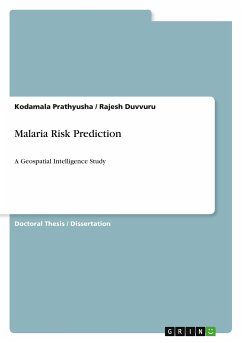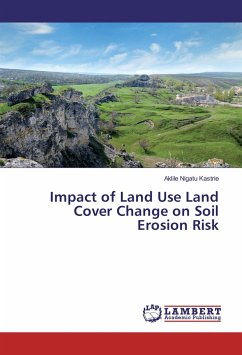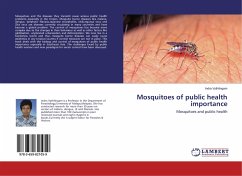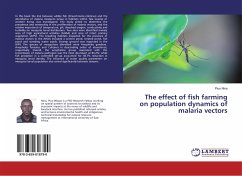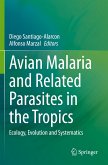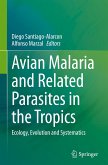Doctoral Thesis / Dissertation from the year 2024 in the subject Environmental Sciences - Sustainability, grade: PhD, Andhra University (Andhra University), course: Environemntal Science, language: English, abstract: The present study concentrated on the prediction of Malaria risk zones in the study area. According to WHO 2022 report, the disease claimed the lives of almost 274,000 kids under the age of five, or 67% of all malaria deaths worldwide. Major causes of death among children vary by age. It reflects that ¿Every two minutes, a child dies from malariä. Also, it emphasizes third Sustainable Development Goal (SDG-3), which Ensure healthy lives and promote well-being for all at all ages, the world is not on a trajectory to achieve the SDG 3 target of ending malaria by 2030. Beside many Malaria reduction programs initiated by the local government and WHO, that reduced the impact of Malaria in many parts of the world. But the UN and WHO objective the Malaria should be endemic by 2030. In addition, The Institute of Health Metrics and Evaluation (IHME) world malaria statistics also shows that the malaria fatality is reduced from 8,92,032 to 6,26,909 during the years 2001-2020. The study area comprises of 12 Tribal population impacted mandals that covers 6,519.9 Sq. Km and chosen study area is prone to malaria disease. In order to reduce the Malaria hazard impact in the study area a right, the hotspot prediction method is needed which is of high importance. The present research proposed and developed a novel Spatial Analysis for Malaria Risk Reduction (SAMRR). The prediction accuracy of the SAMRR is very high compared with other Machine Learning (ML) algorithms. This work focuses on six objects related to ¿Malaria Health Hazard Risk Reduction¿ with GIS and Machine Learning (ML) procedures. Data collected from various national and international research and academic repositories such as APSAC, APSDPS and DMFW dept. related to demographic, health and environmental aspects that are help to evaluate the malaria incidence in the study area.
Bitte wählen Sie Ihr Anliegen aus.
Rechnungen
Retourenschein anfordern
Bestellstatus
Storno

